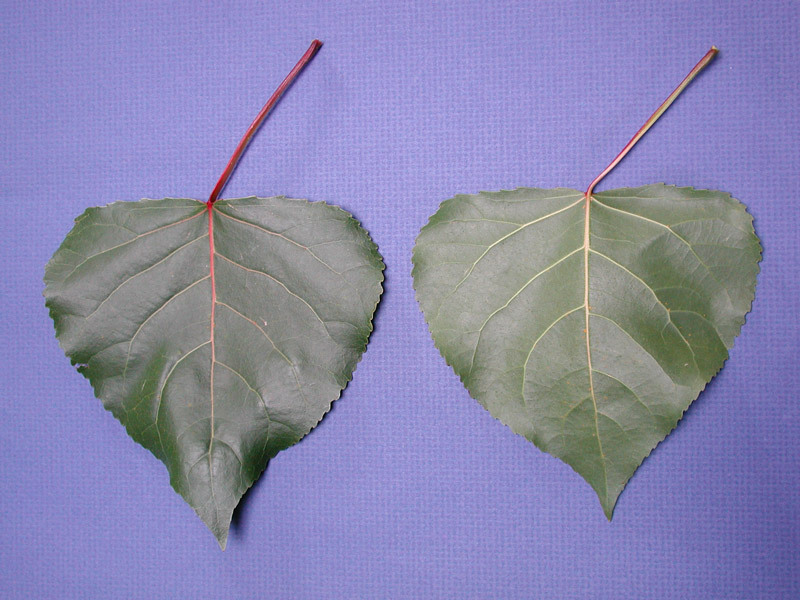
Key to Poplars and Willows
in New Zealand
Version 1.0.5
'Veronese'
- 0. Poplar or Willow?
- Looks like a poplar -> Poplar - 1. Crown shape
- Narrow crown (or uncertain) -> 2. Bark
- Bark is rough -> 4. Bark and form
- Bark coarsely ribbed, ribs not parallel. Apical dominance, often with a heavy asymmetrical branch(es), leaves with green upper surface, light green lower surface, leaves hang down from stem -> 6. P. x euramericana hybrids
- Narrow crown and trunk, flushes bronze-red in mid-September, bark less deeply ribbed cv 'Weraiti', commonly planted -> 'Veronese'
Populus deltoides x P. nigra PN 870
‘Veronese’ is a P. x euramericana hybrid that was bred in Italy, imported into New Zealand and released commercially in 1986.
Identification
‘Veronese’ leaves are dark green on the upper surface and light green below, with a red midrib. In Manawatu, leaf-fall occurs in April, and the trees flush a bronze-red in mid September. The leaves hang at a vertical angle to the stem (see photo).
‘Veronese’ is a female tree with a narrow crown and excellent apical dominance.
Typical uses, site requirements, pest and disease resistance
‘Veronese’ is used for soil conservation, windbreaks, stock fodder and timber production. ‘Veronese’ has a high water-use-efficiency, and therefore it is relatively drought tolerant compared with other poplars. It is commonly used on windy and exposed sites, along with the variety ‘Argyle’.
‘Veronese’ is not very resistant to the poplar rust or leaf anthracnose, a further reason for planting in dry sites less conducive to disease. ‘Veronese’ is not possum resistant.
Performance in trials
At age 8 on a wet exposed site in Manawatu (ann. rainfall 1200 mm), pruned Veronese’ at 8 m spacings had an average height of 10.4 m and diameter (dbh) of 18 cm (below left). At the same age widely-spaced ‘Veronese’ on a good site in Tauranga (ann. rainfall 1300 mm) had an average height of 12.0 m and a dbh of 21 cm.
In a Fan Nelder trial in Waipukurau (ann. rainfall 900 mm), age 8 ‘Veronese’ trees spaced 4 - 11 m apart had an average height of 10.7 m and a dbh of 17 cm.




